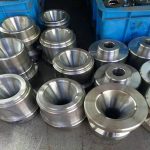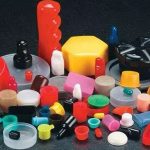Epoxy resin (EP) is an important thermosetting material. Because of its excellent chemical resistance and stability, good optical transmittance and adhesion, it is widely used in adhesives, coatings and advanced nanocomposite materials.
However, EP has the characteristics of high flammability and low decomposition temperature, which makes it produce a large amount of CO, CO2 and toxic smoke during the combustion process, which severely limits the application fields of EP. In order to improve the flame-retardant properties of EP and expand its application fields, adding high-efficiency flame-retardants to it has become one of the important directions to improve the flame-retardant properties of EP matrix. In recent years, green and environmentally friendly halogen-free flame retardants have been proven to significantly improve the fire safety performance of the polymer matrix. They have the characteristics of low smoke generation and no toxic and harmful gas generation. They have attracted more and more attention in the field of flame retardants.

However, while improving fire safety performance, the addition of green halogen-free flame retardants will seriously reduce the transparency of EP and limit the application of EP in some special fields, such as solar roads, light-emitting diodes, and multi-purpose coatings. Therefore, the research on green halogen-free flame retardant materials that can still maintain its transparency while improving the fire safety performance of EP is a difficult point and research hotspot in this field. Nanomaterials of different sizes have been proven to significantly improve the flame retardant properties of polymers. Basic Magnesium Borate (MBH) is an attractive new halogen-free flame retardant due to its low cost, environmental friendliness and excellent synthesis. Performance, has application and research value in the field of flame retardant.
In order to effectively improve the thermal stability and fire safety of EP and maintain high optical transmittance, the team of researcher Liu Zhiqi from Qinghai Salt Lake Research Institute prepared MBH and used a high temperature curing method to add 1 wt% —— 10 wt% of MBH to Epoxy resin prepared EP/MBH composite material. The results show that, due to the similar refractive index of MBH and EP, the optical transmittance of the composite material is still greater than 70% in the wavelength range of 800-400 nm when the amount of MBH is 10 wt%. The addition of MBH increases the residual carbon content of the EP/MBH composite material and reaches the flame-retardant level. Compared with EP, the flame retardant parameters of EP/MBH materials have significantly decreased. EP/5MBH composite materials are the most prominent, with peak heat release rate (pHRR), peak smoke release rate (pSPR), peak CO release rate (pCOP), The peak CO2 release rate (pCO2P) and the fire spread index (FIGRA) are reduced by 30%-50%. The study of flame retardant mechanism shows that MBH flame retardant EP is a solid phase flame retardant mechanism. MBH decomposes into magnesium borate during the flame retardant process, which acts as a condensed phase flame retardant and prevents the spread of heat and combustible gas.
At present, halogen flame retardants still dominate the flame retardant of ABS. Such flame retardants have a large amount of smoke and release hydrogen halide gas when burned, and then absorb water to form highly corrosive hydrohalic acid. Second pollution. Therefore, ABS flame retardant is currently tending to be halogen-free, and the research on halogen-free flame retardants has become one of the hot spots in various countries in the world. Halogen-free has become the main trend in the development and application of flame retardants. In recent years, research on new flame retardants and smoke suppressants is quietly emerging. Among them, silicone powder and nano-clay (n-MMT) belong to this category. The heat release rate of organic silicon powder itself is very low, and is not affected by the external heat flow. They are filled in the polymer with a very low content (generally less than 2%), which can significantly reduce the heat release rate of the polymer and burn No smoke is produced at all times. Nanoclay (n——MMT) has excellent flame retardant effect, because on the one hand, the lamellar structure of nanoclay has excellent flame retardant and barrier properties, and on the other hand, because the polymer molecular chain enters through the intercalation method. The movement of molecular chains between the clay flakes is restricted by the clay flakes, which plays a protective role, so the flame retardant and heat resistance properties of the material can be improved.
The polymer/clay nanocomposites prepared by the intercalation method have aroused people’s great interest because of their excellent properties. The intercalation composite method is an important method for preparing high-performance polymer-based nanocomposites, and it is also a hot spot in the field of materials science. It inserts monomers or polymers between the layers of the clay flakes to destroy the layer structure of the clay. , It is dispersed in the polymer in a sheet with a thickness of about 1 nm to form a polymer nanocomposite material. The composite of polymer and clay at the molecular level greatly increases the interface interaction between polymer and montmorillonite, so that the composite material has excellent mechanical properties and flame retardant properties. The polymer/montmorillonite nanocomposite has special flame retardant properties. In 1997, Jeffery et al. used a cone calorimeter (ASTME1345, ISO5660 and BS47615 standards) to compare the flame retardant properties of nylon 6/clay nanocomposites. The results show that nylon 6/montmorillonite nanocomposites have special characteristics. Flame retardant performance. For inorganic additive flame retardants such as Al(OH)3 and Mg(OH)2, the flame retardant effect is mainly manifested in the insulation, cooling and dilution effects of combustion. As a refractory layered silicate, clay is uniformly dispersed in the polymer at nanometer scale through intercalation. The barrier effect of the montmorillonite sheet with high thermal stability in the two-dimensional direction will cause degradation and combustion of the polymer. huge influence.
There are few research reports on ABS/clay nanocomposites. Lee et al. used emulsion method to synthesize ABS/clay nanocomposites, and the thermal decomposition initiation temperature was 40-50℃ higher than that of pure ABS. Sam et al. used the melt intercalation method to prepare ABS/clay nanocomposites. Shaofeng Wang et al. organically modified clay to prepare organoclay, and then successfully prepared ABS/organoclay nanocomposite by melt intercalation method. When the clay content is 5%, the oxygen index of the material can be increased by 0.5. Better than ordinary composite materials, thermal weight loss analysis shows that there are two stages of ABS weight loss, the first stage is about 250-500℃, the second stage is about 500-600℃, and the first stage is mainly on the ABS main chain. The butadiene, styrene, and propylene segments are sequentially pyrolyzed and broken into small molecules. The weight loss is about 80%, which determines the thermal stability of ABS. The intercalated ABS/clay forms a carbon-silicate alternately arranged multilayer nanostructure in the first stage of thermal degradation, and it is still stable at 600°C. XRD and TEM clearly show that after treatment at 600°C, the organoclay distributed in the ABS in the form of exfoliation-intercalation blending automatically undergoes structural rearrangement and becomes a dense and stable multi-layer structure. The multi-carbon layer has a reinforcing effect. It promotes the formation of a solid carbon layer on the surface of the material, which is why the thermal stability of ABS/clay nanocomposites is higher than that of pure ABS. At present, it is not very ideal to achieve the flame retardant effect only through the formation of nanocomposites of clay and ABS. Sometimes it is necessary to select appropriate traditional flame retardants to add to ABS. The more commonly used are phosphorus, nitrogen and inorganic Mg( OH) 2. But nano flame-retardant composite materials will be a research direction with great development potential.
Link to this article: New flame-retardant composite materials come out!
Reprint Statement: If there are no special instructions, all articles on this site are original. Please indicate the source for reprinting:https://www.cncmachiningptj.com
 PTJ® provides a full range of Custom Precision cnc machining china services.ISO 9001:2015 &AS-9100 certified.
PTJ® provides a full range of Custom Precision cnc machining china services.ISO 9001:2015 &AS-9100 certified.
Machining shop specializing in fabrication services for construction and transportation industries. Capabilities include plasma and oxy-fuel cutting, Tailored machining, MIG and Custom Aluminum Cnc Precision Milling Welding Jig Fixture, roll forming, assembly, Lathe machining stainless steel cnc machine shaft, shearing, and CNC Swiss Machining services. Materials handled include carbon and Passivation Stainless Steel Machining Cover Plate Parts.
Tell us a little about your project’s budget and expected delivery time. We will strategize with you to provide the most cost-effective services to help you reach your target,You are welcome to contact us directly ( [email protected] ) .
Link to this article:New flame-retardant composite materials come out!
Reprint Statement: If there are no special instructions, all articles on this site are original. Please indicate the source for reprinting:Tungusten,Thanks!^^








